How to Plant Fruit Trees in Pots
- September 26, 2024
- 0 comment
Have you ever wanted to grow your own fruit but thought you didn’t have enough space? Can fruit trees really thrive in containers? The answer is yes, with the right approach.
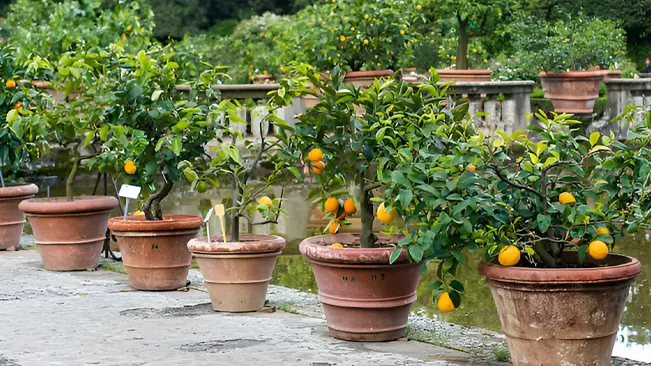
Planting fruit trees in pots is not only possible but also a great solution for those with limited space, such as apartment dwellers, or anyone wanting to grow a variety of fruits in a small garden.
Why Plant Fruit Trees in Pots?
Fruit trees in containers offer several advantages. For one, they give you the flexibility to grow fruit in small spaces, whether on balconies, patios, or even indoors near a sunny window. Additionally, they make it easier to manage soil quality, water levels, and pests compared to trees planted in the ground. By choosing the right tree, container, and soil, you can enjoy fresh home-grown fruit even without a large garden.
When growing fruit trees in pots, there are several important factors that determine success, including tree variety, container size, soil type, and climate. Let’s break each one down.
1. Choosing the Right Tree
Not all fruit trees are suitable for container growing. Dwarf or semi-dwarf varieties are ideal because they have a smaller root system and require less space. Some popular options include:
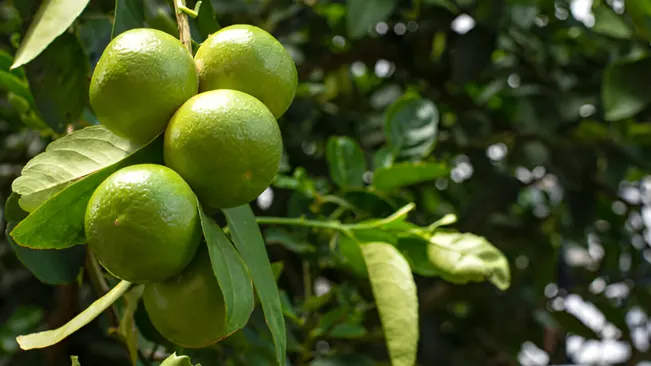
- Citrus trees like lemons and limes, which grow well in containers and can even be brought indoors during colder months.
- Apple trees, particularly dwarf varieties like ‘Honeycrisp’ or ‘Gala.’
- Fig trees, which thrive in pots and can tolerate some root confinement.
- Peach and nectarine trees, with dwarf varieties like ‘Bonanza’ that are bred specifically for small spaces.
Choosing a tree bred for container growth ensures that the root system won’t outgrow the pot too quickly and that you’ll get a manageable harvest.
2. Selecting the Right Pot
The container you choose must have adequate space for root growth and good drainage. A common mistake is planting a tree in a pot that’s too small, which can stunt growth and stress the plant.
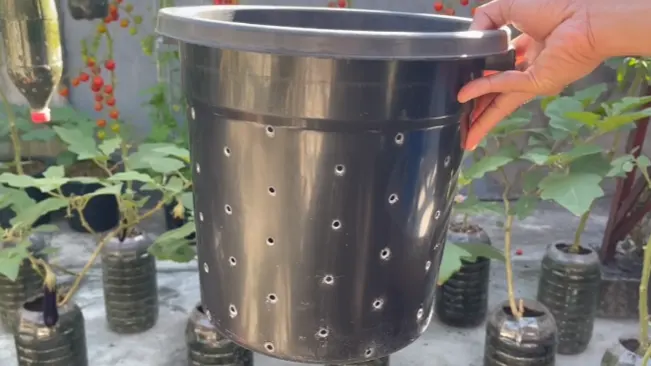
- Size: For most dwarf fruit trees, start with a container that’s at least 15 to 20 inches in diameter and deep enough (at least 18 to 24 inches) to accommodate the tree’s root system. As the tree matures, you may need to repot it into a larger container.
- Material: Pots can be made of various materials like plastic, ceramic, or terracotta. While plastic is lightweight and easier to move, terracotta and ceramic pots provide more stability but may require more frequent watering due to their porous nature.
- Drainage: Ensure the pot has several drainage holes at the bottom to prevent water from pooling and causing root rot. Adding a layer of gravel or small stones at the bottom can also help with drainage.
3. Soil and Fertilizer
Fruit trees in containers need well-draining soil, which can often be achieved with a high-quality potting mix rather than garden soil. A mix that includes peat, perlite, and compost works well for container trees.
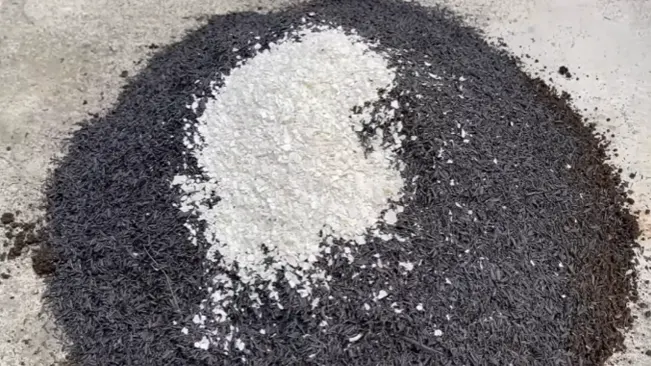
- Soil mix: Choose a potting mix designed for fruit trees or citrus trees, which provides the right nutrients and aeration. Avoid regular garden soil, which may compact in the container and limit root growth.
- Fertilization: Since nutrients in pots deplete faster than in-ground planting, fertilizing your tree is crucial. Use a balanced, slow-release fertilizer in the spring and supplement with liquid feed throughout the growing season to ensure consistent nutrition.
4. Watering and Sunlight
Watering is perhaps the most critical element of caring for fruit trees in containers. Trees in pots dry out faster than those in the ground, so they need regular watering especially during hot weather.
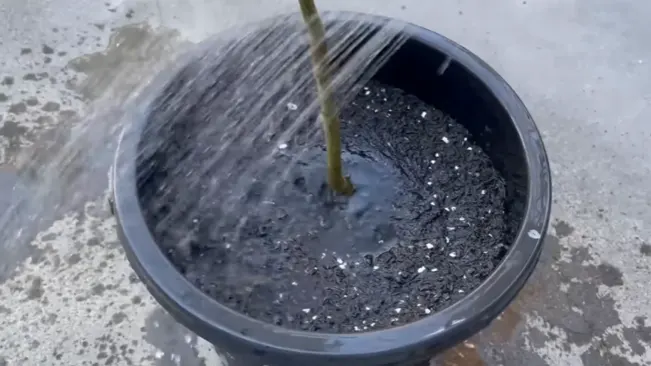
- Watering: Keep the soil consistently moist, but not waterlogged. A good rule of thumb is to water when the top inch of soil feels dry to the touch. Overwatering can lead to root rot, so always check the soil before watering.
- Sunlight: Fruit trees require full sunlight, meaning at least six hours of direct sunlight per day. Position your container in the sunniest spot possible, whether it’s a patio, balcony, or near a large window indoors.
Practical Tips for Growing Fruit Trees in Pots
- Pruning: Regular pruning is essential for maintaining the shape of your fruit tree and encouraging fruit production. Remove dead or overcrowded branches to improve air circulation and allow sunlight to penetrate the tree.
- Repotting: Every few years, you’ll need to repot your tree into a slightly larger container to prevent rootbound issues. Repot in early spring before new growth begins.
- Pest control: Keep an eye out for common pests like aphids or spider mites, which can be more problematic in container trees. Use insecticidal soap or organic methods to treat infestations.
- Winter care: For non-citrus trees, allow them to go dormant during winter by reducing watering and keeping them in a cool but frost-free area. Citrus trees may need to be brought indoors if temperatures drop below freezing.
Conclusion
Planting fruit trees in pots is a practical and rewarding way to grow fresh fruit, even in small spaces. By choosing the right tree, pot, soil, and care routine, you can enjoy home-grown fruit on your balcony, patio, or even indoors. With proper maintenance, including regular watering, fertilizing, and pruning, your fruit tree will thrive and provide delicious harvests for years to come.
Frequently Asked Questions (FAQ)
- What are the best fruit trees to grow in pots?
The best fruit trees for pots are dwarf or semi-dwarf varieties that have smaller root systems. Popular options include citrus trees (lemons, limes), dwarf apple trees, fig trees, and peach or nectarine trees. - How large should the pot be for a fruit tree?
Start with a pot that’s at least 15 to 20 inches in diameter and 18 to 24 inches deep. As the tree matures, you may need to repot it into a larger container to accommodate the expanding root system. - What type of soil should I use for fruit trees in pots?
Use a high-quality, well-draining potting mix. A blend of peat, perlite, and compost works well. Avoid using regular garden soil as it can compact in the container and hinder root growth. - How often should I water a fruit tree in a pot?
Water when the top inch of soil feels dry. Potted trees dry out faster than in-ground plants, so they may require watering more frequently, especially during hot weather. However, avoid waterlogging the soil, which can lead to root rot. - Do fruit trees in pots need to be fertilized?
Yes, container-grown trees need regular fertilization since nutrients deplete faster in pots. Use a balanced, slow-release fertilizer in spring, and supplement with a liquid feed during the growing season for optimal growth and fruit production. - Can fruit trees in pots survive winter?
Many fruit trees can survive winter, but citrus and other sensitive varieties may need to be brought indoors or protected from freezing temperatures. Non-citrus trees should be allowed to go dormant by reducing watering and moving them to a frost-free area. - How often should I repot a fruit tree?
Repot your fruit tree every 2 to 3 years to refresh the soil and provide more room for root growth. Choose a pot that is 2-4 inches larger in diameter than the current one to avoid rootbound issues.
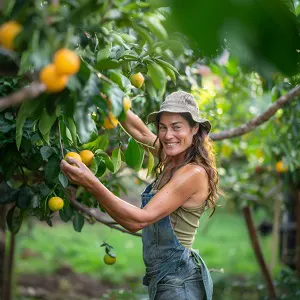
Emma Hudson
Forestry AuthorEmma's experience in farming shapes her detailed guides on gardening and farming tools, providing practical, actionable advice grounded in real-world experience. Her work targets both newcomers and experienced farmers, aiming to enhance their practices with a mix of traditional wisdom and modern techniques. By making complex agricultural concepts accessible, Emma's guides serve as valuable tools for those navigating the challenges of contemporary farming, offering strategies for sustainable success.


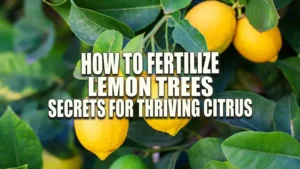

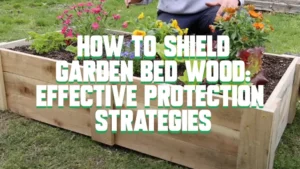








Leave your comment